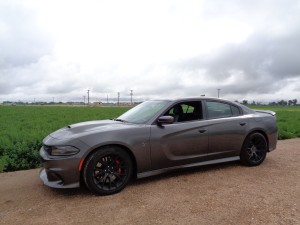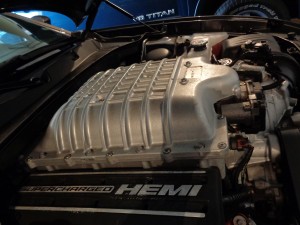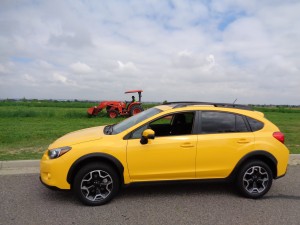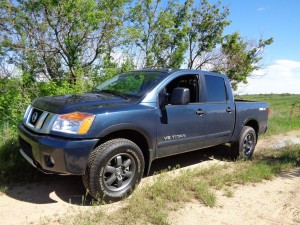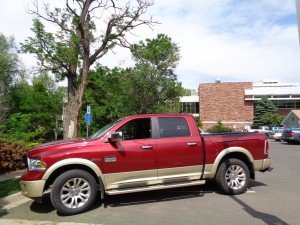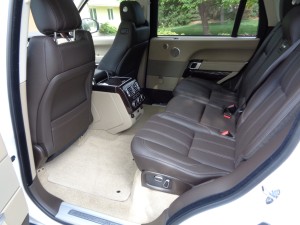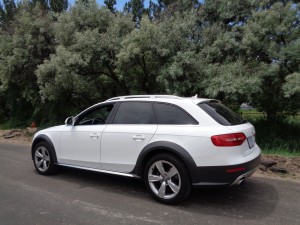
Wagons, once the prevailing choice for family travels, have barely survived against the advancement of, first, minivans, then SUVs and now crossovers.
There are still a few around, some good ones.
Best-known of the eight or 10 wagons sold in the U.S. is the Subaru Outback, which got a grip on Colorado roads 20 years ago and hasn’t turned loose.
Best-handler of the bunch, though, is the Audi allroad. With quattro all-wheel drive adding security, the German-built wagon provides a fun drive through the Colorado mountain roads, particularly when the pilot opts for paddle-shifting its 8-speed automatic transmission.
The allroad is relatively small, for it is based on the Audi A4; some years ago it was a derivative of the larger A6.
Among the few other wagons available are an impressive newcomer, the Volvo V60, and the Outback, BMW 328xi, Volkswagen Golf and Jetta SportWagen, Volvo XC70, Mercedes-Benz E Class, Toyota Prius V, Ford C-Max and several others.
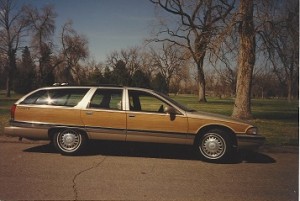
The allroad’s smaller physique is noticed when slipping into the driver’s seat and for the fact its front-seat cushions are about an inch shorter than seats of the competition’s.
Out on the twisty roadways, though, it is all about good ride and maneuvering and strong performance. The turbocharger for the 2.0-liter, 4-cylinder kicks in with lots of thrust at low rpm and continues through midrange speeds. Shifts are quick with the 8-speed. The small-block engine develops 220 horsepower and 258 lb.-ft. of torque. In a wide variety of driving duties, both in town and on the open road, the allroad averaged 26.9 miles per gallon (21/28 EPA estimate).
The review model was dressed inside like other German products with a black interior, brown leather seats and chrome trim. Opening the shade on a full-length moonroof will brighten the dark finish.
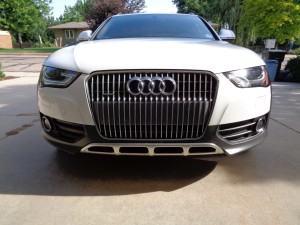
The allroad’s cargo space of 27.6 cubic feet is far roomier than that of the Volvo V60, though it doesn’t match up to the roominess in the Outback and XC70.
Added to the allroad’s base price of $42,400 were two packages:
The technology list, $2,900, included navigation with voice control and color display, parking system with rearview camera and side assist for blind-spot warning.
The premium list, $2,100, features heated front seats, multifunction steering wheel, auto-dimming and heated power-folding exterior mirrors and auto-dimming interior mirror with compass.
These brought sticker price to $48,325.
Here are the specifications for the ’15 Audi allroad:
- Capacity 5-passenger
- Wheelbase 110.4 inches
- Length 185.9 inches
- Width 72.5 inches
- Height 58 inches
- Curb Weight 3,891 pounds
- Track 62.3 inches front, 62 rear
- Ground Clearance 7.1 inches
- Turn Circle 37.7 feet
- Drivetrain All-wheel-drive
- Engine 2.0-liter turbocharged 4-cylinder
- Horsepower/Torque 220/258
- Transmission 8-speed automatic
- Steering electromechanical power
- Suspension five-link front, trapezoidal-link rear
- Fuel mileage estimate 21/28
- Fuel mileage average 26.4
- Fuel Tank 16.1 gallons, premium
- Wheels 18-inch
- Tires Pirelli Cinturato 245/45R18
- Cargo Volume 27.6 cubic feet
- Warranty 4 years/50,000 miles basic, powertrain
Competitors Volvo V60, Subaru Outback, BMW 328xi, Volvo XC70, Mercedes-Benz E Class
Assembly Plant Ingolstadt, Germany
Parts Content U.S./Canadian 1%, Germany 57%, Hungary 27%
Base Price of Lowest Model $42,400; Base Price of Review Model $42,400; Destination Charge $925; Sticker Price $48,325.
